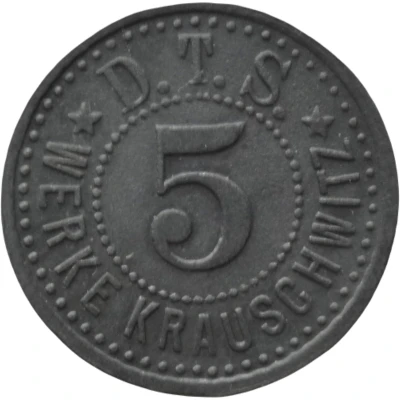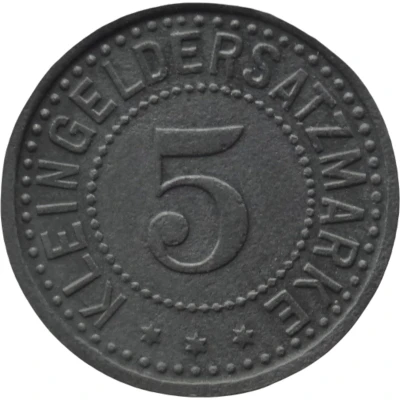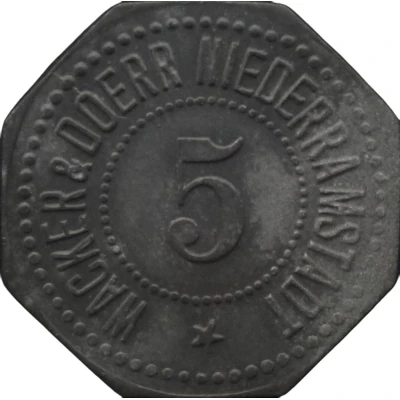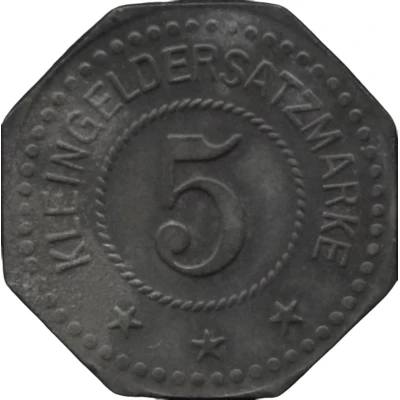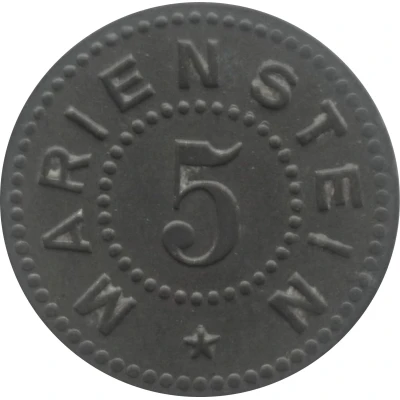
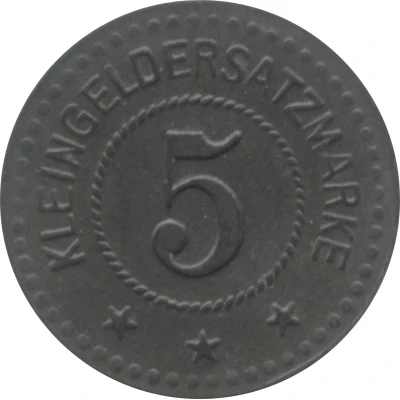

© Willem63 (CC BY-NC-SA)
5 Pfennigs - Marienstein ND
| Zinc | 1.5 g | 19.0 mm |
| Issuer | German notgeld (Germany) |
|---|---|
| Type | Standard circulation coin |
| Value | 5 Pfennigs (5 Pfennige) (0.05) |
| Currency | Mark (1914-1924) |
| Composition | Zinc |
| Weight | 1.5 g |
| Diameter | 19.0 mm |
| Thickness | 0.9 mm |
| Shape | Round |
| Technique | Milled |
| Orientation | Medal alignment ↑↑ |
| Demonetized | Yes |
| Updated | 2024-10-04 |
| Numista | N#348472 |
|---|---|
| Rarity index | 95% |
Reverse
Pearl rim, legend surrounding rope circle with denomination centered
Script: Latin
Lettering:
KLEINGELDERSATZMARKE
5
★ ★ ★
Edge
Plain
Comment
Menzel: BBBFa.: Kalk- und Schiefersteinbruch
Interesting fact
The 5 Pfennigs - Marienstein ND coin was issued during a time of economic turmoil in Germany, known as the "Inflationary Period" (1914-1924), when the value of the German mark plummeted, and the price of goods and services skyrocketed. To address this issue, the government introduced a new currency, called the "Notgeld" (meaning "emergency money" in German), which was made of cheaper materials like zinc, aluminum, and even playing cards. The 5 Pfennigs - Marienstein ND coin was one of the many Notgeld coins issued during this time, and it features a unique design, showcasing the Marienstein Castle in Germany. Despite its low value, the coin is now a sought-after collector's item, and a piece of history that highlights Germany's economic struggles in the early 20th century.
